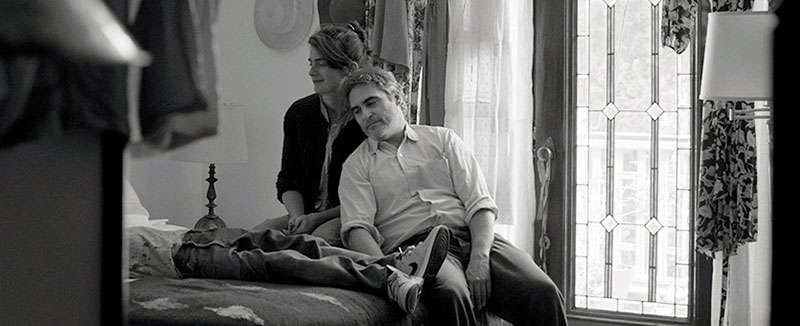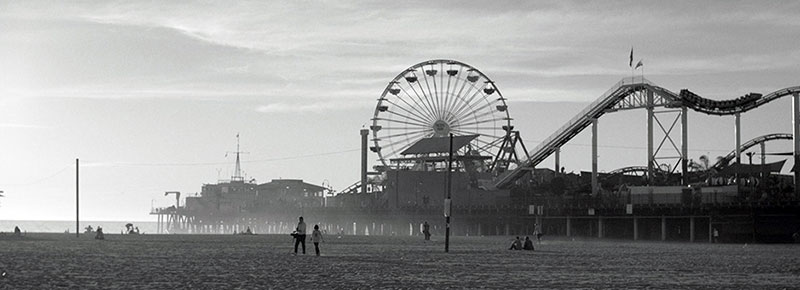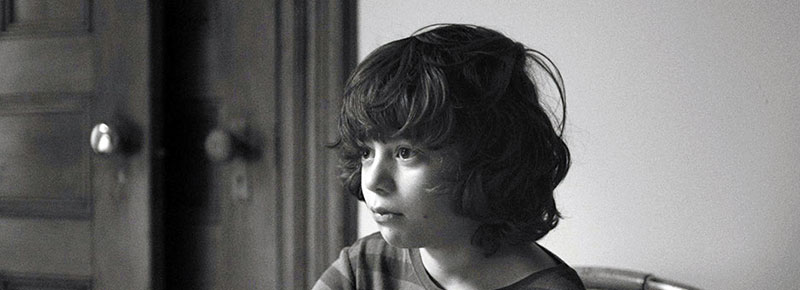Colourist and Creative Director at The Mill, Mark Gethin, talks about grading this black and white film on Baselight, using it to highlight faces and push back the surroundings.

'C’mon C’mon' is about a radio journalist who takes a cross-country trip with his energetic nephew, intending to show him life away from Los Angeles. The film has received many nominations, and has won the Golden Frog at the 2021 EnergaCAMERIMAGE festival.
Colourist and Creative Director at The Mill, Mark Gethin, colour graded the film on FilmLight's Baselight system. Mark has been a colourist since he was in his early 20s and before digital recording took over in cinema. Everything was still shot on film, which he feels was a great way to learn grading skills.
This was the second feature film he has worked on with the movie’s director Mike Mills. They have also collaborated on a short form projects over the last several years including TV commercials, music videos and short films. “Mike has a great eye and gets very involved in the grade. We don’t usually work with references. Instead, he is open to experimenting in the suite and seeing what feels right for the film,” Mark said.
Timeless

Mark carried out a series of camera tests with the DoP Robbie Ryan, who talked about the density he wanted the film to be, and Mark supplied him with a LUT for the shoot. The project was shot on the Arri ALEXA Mini in black and white, and graded on Baselight. They spent about two weeks on the grade.
“We wanted to make the film feel timeless and not necessarily tied to a specific era, so we identified a few classics that had that same feel to them. Once we started grading though, we realised we really liked the ‘dodge and burn’ effect,” said Mark. When using this technique, Dodge lightens one set of selected pixels, while Burn darkens a different set of selected pixels, which is useful because other ways of adjusting the overall brightness or hue of a photo generally apply the changes universally, which can make the image feel rather flat.

He noted, “We decided on a base exposure for everything pretty quickly and then spent the rest of the time using windows to work on the actor’s facial features, and also pushing back certain elements in the environments. Grading in black and white really enables you to spend time just playing with contrast and shaping the shots more."
No Distractions
Mark has actually worked on quite a few black and white projects over the years, ranging from music videos and commercials shot on black and white film stock, to more recent projects shot digitally. “It was interesting grading a feature-length film in black and white. Mike has said that it takes your focus off the textures in the colour world," he said. "You tend not to get distracted by backgrounds and concentrate more on the actors’ faces. So with that, we spent a lot of time highlighting faces and pushing back the surroundings.”

He used a lot of windows and luminance keys for the project, and found Baselight to be a really great tool for quickly throwing up shapes and working inside or outside of them with the full range of grading features. He said, “The number of windows we used was probably the most challenging part of the grade, and certainly Baselight’s tracking and keyframing helped a lot.” When using windows to select specific parts of video clips to grade, the window shape can be precisely customised and then tracked to match movement.
Luminance keying, used when working with grayscale images, works in a similar way to chroma keying in colour images. It involves first setting the brightness level, and then turning off all pixels that are brighter or darker than the set level and making them transparent. A second clip or image can be inserted behind, revealing where the pixels have been turned off. www.filmlight.ltd.uk



